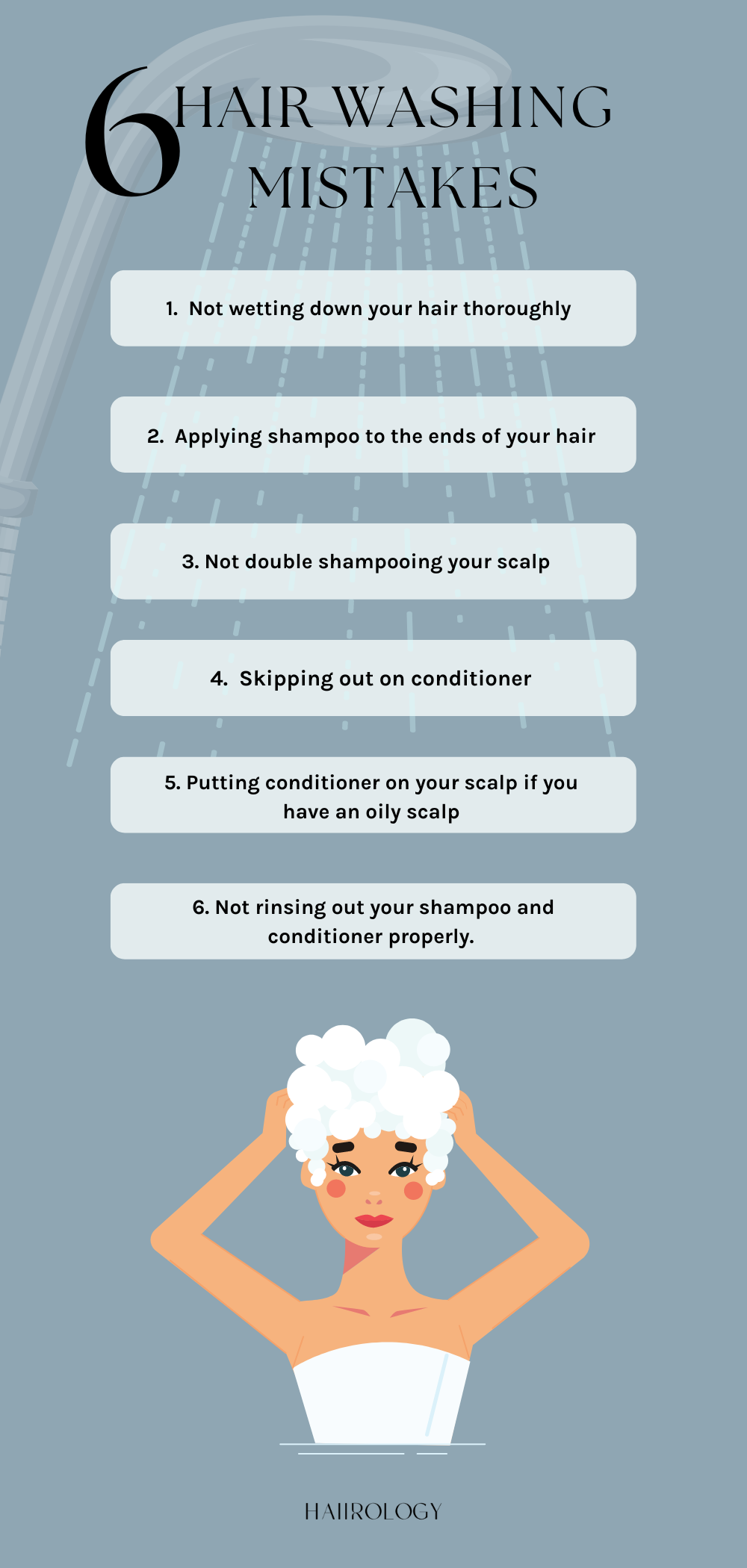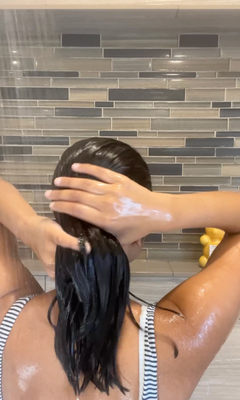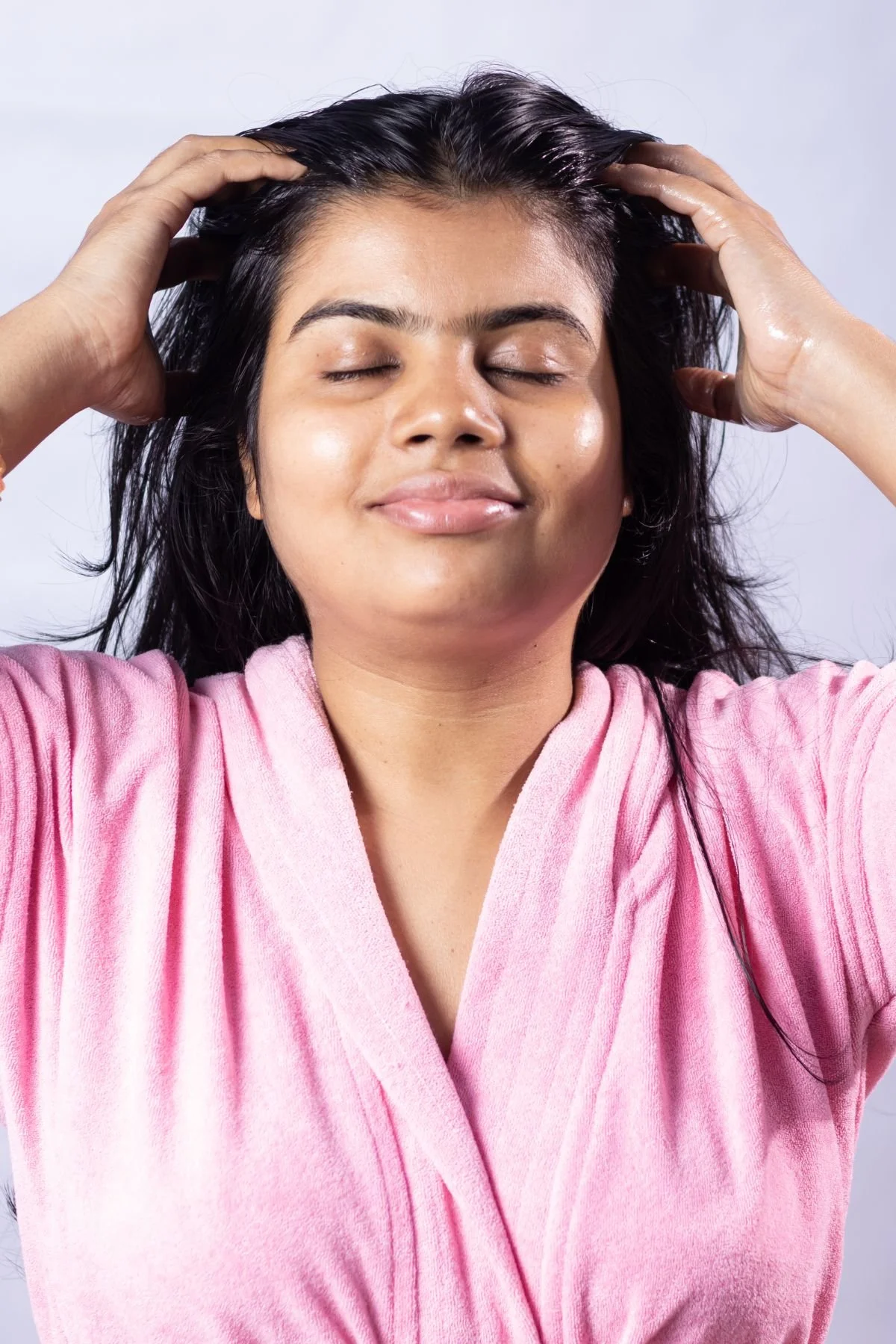6 Hair Washing Mistakes You Might Be Making!
This post may contain affiliate links, which means I'll receive a commission if you purchase through the link at no extra cost to you. Please read the full disclosure here.
Washing your hair appears uncomplicated and simple, but even though many of us prefer to adhere to the same 'lather, rinse, conditioner' regimen without giving it much consideration, experts have pointed out that we may have been doing it incorrectly all along. Washing your hair properly is essential to hygiene and the health and growth of your locks.
By ensuring your wash routine is perfected, you can eliminate any hair-related concerns that may be emphasized by improper maintenance. You can avoid damaging your hair and hair follicles by using correct hair-washing procedures. It will also ensure that you do not damage the skin on your scalp.
That's why, if you want to do what's best for your scalp, hair cuticles, and hair type, there are a few things you should keep in mind to help you achieve a healthy scalp and healthy hair.
Hair Washing Mistakes
Mistake # 1
Not wetting down your hair thoroughly
When your hair isn’t completely wet when you start your washing routine, it can cause tangles, counteract the moisturizing and clarifying properties of your products, and make your wash day significantly harder. If you hop into the shower and immediately apply products despite portions of your hair being dry, your scalp does not get the proper refresh it needs.
It is important to thoroughly saturate your hair with enough water to ensure that the shampoo and conditioner absorb into each strand to remove any product or dirt. Using lukewarm water helps your product's benefits penetrate into your hair and encourage it to absorb the conditioner's moisturizing properties effectively.
Some simple tips when washing your hair are to Split your hair into sections and allow the water to soak it. Massaging the scalp while the water runs on top of your hair can help saturate the hair faster and speed up the entire process. Once your hair is fully soaked, squeeze out any excess water and begin applying your products.
Mistake # 2
Applying shampoo to the ends of your hair
Contrary to what you may believe, shampoo does not help your ends nearly as much as it does your scalp. The ends of your hair require more moisture than your scalp, as your scalp naturally will reproduce sebum after the wash cycle. Your ends are more susceptible to dryness if the natural oils are stripped from the end of the hair from your shampoo.
Only apply shampoo to the scalp; when rinsing, let the shampoo run to your ends. This will ensure that any oil buildup is removed from the scalp while being gentle on the ends.
Mistake # 3
Not double shampooing your scalp
When you double shampoo, you are applying shampoo on your hair twice in the same shower or bath. Double washing is a method that many claims help eliminate oil during the first shampoo and nourish during the second wash. Shampooing twice will assist in getting rid of extra product and washing away any built-up oil around your scalp that your first shampoo did not manage to rinse out.
However, washing twice might not apply to those who wash their hair daily or every other day.
Mistake # 4
Skipping conditioner
Do not skip out on conditioner. Make sure to condition your ends every time. This adds back hydration to your hair and brings back your hair's pH to the level it should be at. In addition, skipping conditioner can leave you with lifeless, flat hair, frizzy hair, and dry hair.
Every time you wash your hair, you should use a conditioner to get shinier hair, more manageable hair and hair that is also easier to brush. Additionally, the conditioner can temporarily seal broken ends. They make the cuticles more supple and lessen friction between the hair strands. This makes your hair shine more by increasing the amount of light it reflects. Regular conditioning will reduce the damage brought on by combing your tangles, leaving your hair silky and gorgeous.
Mistake # 5
Putting conditioner on your scalp if you have an oily scalp
Only put conditioner on your ends, as putting it on the scalp if you have an overproduction of oil will make your hair get oily even faster.
Most people inadvertently pour conditioner on their hair's ends before spreading it into their roots. However, just as your shampoo should not be applied to your ends, your conditioner should not be applied to the roots of your hair if you have oily hair. Your scalp replenishes its natural oils after shampooing, but these oils typically stop there, leaving your ends dry. Your hair strands can stay flexible and hydrated with the aid of a conditioner, contributing to your scalp health. Additionally, it prevents breakage when you brush your hair.
By adding too much conditioner to the sebum that our scalps already create on a regular basis, you run the danger of blocked follicles, which stop hair development and increase sebum production.
Mistake # 6
Not rinsing out your shampoo and conditioner properly.
Get in there and wash it out! When washing, you should massage your scalp with your hands to create a lather. Shampooing in this manner will aid in supplying the hair follicle with essential nutrients, and help your hair to dry faster, have added volume and bounce, and maintain a style for longer. Make sure to run your hands through your hair to feel if there is any product left. Wet hair tends to be weaker, so it’s important to be gentle.
What type of shampoo should I use on my hair?
Use a lightweight shampoo if your hair is fine.
Look for something hydrating if you have thick or coarse hair.
If you have coloured hair, seek a product that is colour-safe and won't wash your dye out.
What is the correct way to wash your hair?
Step 1: Wet down your hair thoroughly. This helps the shampoo to lather up better.
Fully saturating your hair with water may take longer than you anticipate depending on how thick or dense your hair is. To ensure that your hair is completely wet, run your fingers through it after letting the water run over your head for at least a minute. You can also slit your hair in half and let the water run through it.
Make sure each strand is soaking wet. Otherwise, your products will not absorb properly.
Step 2: Double shampoo your scalp twice
The first shampoo is meant to remove the surface layer of dirt and the second shampoo gives you a deep clean.
Never scrape or scratch your scalp with your nails since it might lead to significant irritation or even infection.
Instead, massage your scalp gently without using your nails. Aim for the same amount of pressure a hairdresser would apply to your scalp during a hair wash and massage, and go in circular motions. Concentrate most of your movement around the hairline.
Step 3: Alway go in with conditioner.
Apply conditioner to your mids and ends after shampoo, raking the product through your hair with your fingers or a wide-toothed comb to disperse the product throughout.
Step 4: Wash out all the product from your hair properly.
Ensure you are using cold or lukewarm water to wash your hair, as a hot water temperature could potentially damage the scalp and strip it of even more oils.
What happens if the shampoo is not washed out properly?
When your shampoo is not properly rinsed out, you can experience product buildup that will leave your hair looking lifeless and dull. You can also experience scalp irritation if you don’t wash your shampoo out properly.
Oil overproduction or lingering hair products can cause you to develop ingrown hairs. This happens when hair grows back into the scalp, causing a bump. Ingrown hairs are often painful, and in order to avoid them you must rinse out your products thoroughly.
Post hair wash aftercare
After shampooing and conditioning, a leave-in conditioner can be applied to the hair. You can style as usual or leave your hair to air dry.
Also, it’s good to know that a lot of leave-in conditioners have heat protection in it. So your hair will be protected from heat if you are heat styling it.



















